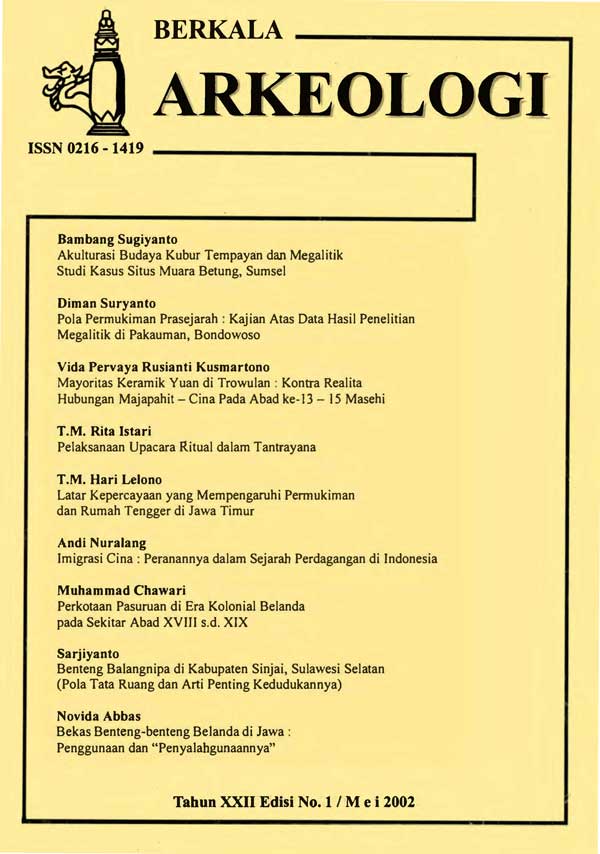PELAKSANAAN UPACARA RITUAL DALAM TANTRAYANA
Main Article Content
Abstract
One of the characteristics of culture in Indonesia is the emergence of a process of assimilation or synthesis between local traditional elements and the culture that came from India. Likewise, the Tantrayana sect in Indonesia has had a lot of influence from local culture or local culture. The continuity of the Tantrayana school until now can be found in the arts and customs. For example: in Balinese art, there are stories of Calon Arang, Rangdha and Sarong related to witchcraft, as well as in intoxicating dances (Javanese: Tayuban). Meanwhile, in customs, you can find sacrificial ceremonies such as tabuh rah, metajen and mecaru. Apart from that, the ceremonies of worshiping ancestral spirits and invoking fertility by using opium as offerings can also be considered as remnants of elements of the Tantrayana tradition.
Article Details

This work is licensed under a Creative Commons Attribution-NonCommercial-ShareAlike 4.0 International License.
References
Bernet Kempers, AJ, 1954. Sedjarah Kebudayaan Indonesia; Universitas Gajah Mada; Yogyakarta
Damais,Louis Charles, 1 970. Repertoire Onomastique de L'epigraphie Javanaise Vol. IX Paris: Ecole Francaise D'extreme Orient
Gosta Liebert, 1976. "Iconographic Dictionary of the Indian Religion" dalam JE. Van Lohuizen De Leeuw ed.Studies in South Asian Culture, Leiden : EJ.Brill.
Hall,DGE. 1960. A History of South-East Asia, Maxmillan & Co Ltd. London.
Haryati Subadio, I 985. Jnanasiddhanta, Penerbitjambatan; Jakarta.
Kats, J. 1910. Sang Hyang Kamahayanikan, 's Gravenhage: Martinus Nijhoff.
Noerhadi Magetsari, 1982. Pemujaan Tathagata .di Jawa pada Abad Sembilan ( disertasi), Universitas Indonesia; Jakarta.
Parisada Hindu Dharma, 1978. Upadeca, IT. Denpasar.
Poerbatjaraka,R.Ng., 1951. Riwayat Indonesia I; Penerbit Yayasan Pembangunan Jakarta.
Pott,PH., 1966. Yoga and Yantra, Translation Series 8, Martinus Nijhoff; Leiden.
Slamet Mulyana, 1979. Nagarakretagama dan Tafsir Sejarahnya, Penerbit Bhratara, Jakarta.
Soediman, 1977. "Latar Belakang Keagamaan Candi Plaosan" 50 Tahun lembaga Purbakala dan Peninggalan Nasional 1913-1963, P.T. Karya Nusantara; Jakarta.
Atmodjo, S. K. (1983). Mengapa Phallus Arca Siwa-Bhairawa Di Pura Kebo Edan Menghadap Ke Arah Kiri?. Berkala Arkeologi, 4(1), 48–54. https://doi.org/10.30883/jba.v4i1.303
Atmodjo, S. K., 1986. "The Phallic Symbol on the Stone Inscription of Samirana ", Untuk Bapak Guru, PT Dwikarya Cipta; Jakarta.
Sutedja, I Wayan, 1986. "Arca Memegang Ayam Dikaitkan Dengan Tradisi Tabuh Rah di Bali", PIA IV; Puspan; Jakarta.
Zoetmulder, PJ., 1982. Old Javanese-English Dictionary 3 jilid; 's Gravenhage: Martinus Nijhoff.

